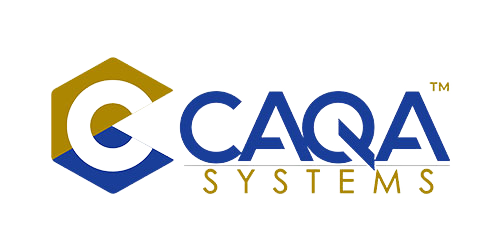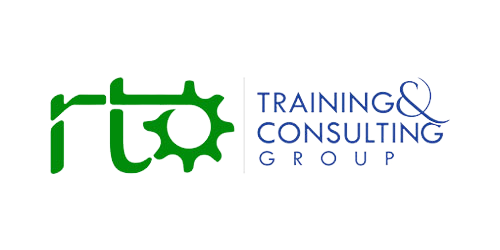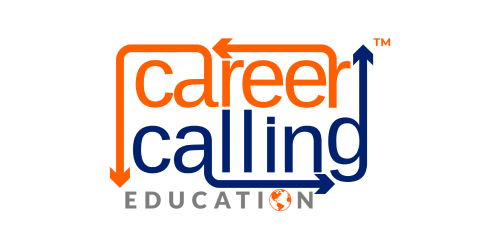Australia's vocational education and training (VET) sector stands at a critical crossroads, with the divisive "Free TAFE" initiative increasingly becoming a lightning rod for deeper systemic tensions. As passionate voices from both public and private training organisations clash over funding models and completion rates, the fundamental purpose of vocational education—transforming lives and building Australia's skilled workforce—risks being obscured by institutional tribalism that serves neither students nor the nation's economic interests.
This investigation, drawing on candid insights from educators across the sector with decades of frontline experience, reveals a more nuanced reality than the simplistic "public versus private" narrative dominating industry discourse. Behind the heated rhetoric lies a rare consensus: Australia's current approach to VET funding and delivery is failing to achieve its potential, with vulnerable students caught in the crossfire of institutional battles while critical workforce shortages continue to undermine economic development.
"The real tragedy is that we're spending precious energy fighting over institutional models rather than collaborating on student outcomes," observes a veteran educator with experience across both TAFE and private providers. "When you strip away the politics, most of us want the same thing—effective pathways to meaningful employment for all Australians, regardless of their background or circumstances."
As Australia grapples with unprecedented skills shortages across critical industries while simultaneously facing rising youth unemployment in disadvantaged communities, the stakes of this debate extend far beyond institutional interests. The nation's economic resilience, social cohesion, and capacity to navigate technological transformation all depend on a vocational education system that effectively serves diverse student needs rather than institutional preferences.
THE FRONTLINE REALITY: Beyond Completion Statistics
The debate around Free TAFE frequently centres on completion rates, with critics pointing to reportedly low graduation percentages as evidence of inefficiency while defenders highlight the challenging cohorts served by public providers. Both perspectives contain elements of truth while missing the larger picture of Australia's diverse VET ecosystem.
A TAFE educator with nearly three decades of experience pushes back against oversimplified narratives: "I have rarely seen a course with a pass rate of only 13%. And funnily enough, I saw a post on LinkedIn that TAFE lecturers just let everyone pass, and that isn't true either."
This educator's experience spans working with extraordinarily diverse cohorts including prisoners, ex-prisoners, high school students who failed traditional education, victims of domestic violence, grandparents without financial support, remote communities, people who didn't complete higher than year 7 or 8, at-risk youth facing court dates, English language learners, and school dropouts dealing with severe bullying, suicide ideation, and self-harm.
"Before you compare completion rates, how about you compare our cohorts too?" This educator challenges critics. "If the government did give you more funding as a private RTO, are these the types of cohorts you would actively seek to come and sit in your classrooms? Remembering that online learning would not be suitable for most of these cohorts."
However, private providers quickly counter that they, too, serve disadvantaged populations. "There is a misconception that independent RTOs don't work with disadvantaged clients—nothing could be further from the truth, with many of us having these cohorts at the center of what we do," responds one private provider. "Our job seeker programs alone are a minimum of 50% ESL - English as a Second Language learners."
Another independent provider with experience since 1989 states: "I have worked in the public, private, and NFP [not-for-profit] space and have worked successfully with each of the cohorts you mentioned. Often these cohorts do not fit neatly into mainstream services, but always should be at the centre of a student-centered learning environment."
This cross-sector experience highlights a crucial reality: the supposed division between "TAFE students" and "private RTO students" is largely artificial. Vulnerable learners exist across the entire VET ecosystem, and providers of all types frequently serve similar populations with varying approaches and outcomes.
THE FUNDING CONUNDRUM: Misaligned Priorities and Hidden Costs
The Free TAFE initiative represents just one component of a complex and often contradictory funding landscape that many educators across both sectors view as fundamentally misaligned with Australia's workforce needs and student interests.
One contributor highlights this misalignment with stark numbers: "Taxpayers are funding $436 million into the SEE program (even though the foundation skills framework is a shambles), where the majority of participants are migrants. While taxpayers have cut employer support for Australian Apprenticeships, destroying hundreds of thousands of work-based VET pathways per year."
This perspective reflects frustration not necessarily with supporting migrant education, but with the apparent reduction in opportunities for domestic students: "My three adult kids can no longer access the work VET pathways to get qualified, while our taxes train kids from overseas."
The funding landscape creates further perverse incentives through higher education policies that many view as working against vocational pathways: "Taxpayers are funding $350 million in Fee Free Uni Ready—so those that have 'failed' to get into university by normal means, and are at high risk of dropout/failure, are encouraged to go to university instead of engaging in VET pathways. To do courses that are less likely to lead to employment, even if they do succeed."
These funding decisions appear particularly questionable in light of labor market realities: "Two-thirds of new jobs are VET jobs, not higher education pathways." Yet many observe that "government funding of VET is dropping in real terms," creating a fundamental disconnect between workforce needs and educational investment.
The financial burden on students creates further distortions: "We'll allow young people to borrow tens of thousands, with very little guidance or thought of the consequences, to study higher education. But we won't allow them to borrow to do most VET pathways that currently reflect two-thirds of all new jobs."
Even supporters of Free TAFE recognise room for improvement, with one noting: "There is no doubt that Free TAFE does a lot of good; however, the argument from most in the VET sector is it could do so much better."
THE COMMON GROUND: Student-Centered Approaches Transcending Institutional Divides
Amid the heated debate over funding models and completion rates, numerous contributors expressed sentiments that reveal significant common ground between public and private providers. This shared territory centers on prioritising student needs over institutional interests and recognising the complex barriers many learners face.
One private provider with extensive experience articulates this student-centered philosophy: "Often these cohorts do not fit neatly into mainstream services, but always should be at the center of a student-centered learning environment. Indeed, so many are the result of an education system that is not equipped or indeed prepared to work creatively with these students, and the work we are tasked and funded for assumes we are teaching people that fit neatly into the system, and they do not."
This educator challenges both sectors to look beyond simplistic explanations for low completion rates: "Completion rates as low as 13% need a long, deep look into why this is so. Don't blame the cohort—look at the system for goodness' sake!"
Another contributor emphasises the artificial nature of the public-private divide: "I have worked in both the TAFE and private system, including owning RTOs, and I worry that people take sides rather than saying that they are both part of the vocational education system."
A powerful statement from an independent provider reveals the shared values across the sector: "Most of us think providing opportunity to those who otherwise would not be able to access those opportunities is not only a great thing, it is a necessary thing. That's why many of us also work with community groups—not-for-profit arrangements—but because we believe in equity and education for all."
This provider continues with an important clarification about the critique of Free TAFE: "We are not against the opportunities being afforded to those in need; we are frustrated that our governments do not see the broader opportunity to more effectively educate, to utilise taxpayer dollars in a better way to achieve better outcomes for all involved, in an equitable way."
Another educator emphasises that quality teaching and commitment to students transcend institutional boundaries: "Providers of all colors are doing a great job, largely via the work of focused, hard-working, passionate educators working in difficult conditions."
REIMAGINING VET: Toward a Truly Student-Centered System
Drawing from the diverse perspectives shared, several potential pathways emerge for moving beyond the public-private divide toward a more effective, student-centered vocational education system:
1. Needs-Based Funding That Follows Students
Multiple contributors suggested models where funding is allocated based on student needs rather than institutional type. One specific proposal recommends: "I'd simply change the criteria to co-contribution capped at 10% of the overall course fees but keep it 'Free' for disadvantaged groups (I'd suggest most if not all of the ones you mentioned would qualify) and open it up to independent providers with a history of high completions and job outcomes."
This approach would maintain accessibility for vulnerable learners while broadening delivery options and creating accountability for outcomes, regardless of whether the provider is public or private.
2. Transparent Outcomes Measurement
The debate around Free TAFE is hampered by disputed claims about completion rates and employment outcomes. As one contributor notes, "One of the issues is that data is not readily available... currently we are all guessing at the real levels."
Another specifically questions why the National Centre for Vocational Education Research (NCVER) is "not managing data effectively for the initiative."
A truly student-centered system would prioritise transparent, comprehensive data on both completion rates and employment outcomes, with consistent methodology applied across all provider types. This would allow for meaningful comparisons and evidence-based policy development.
3. Addressing Systemic Barriers to Success
Several contributors highlighted that earlier educational experiences have failed many students struggling in VET: "The work needed is remedial, and when an honest assessment is undertaken, we can with some degree of accuracy pinpoint that point in time when they were parked up as 'just too hard to work with,' essentially victim-blaming to justify a failed system."
A truly student-centered approach would include systematic support for addressing these foundational gaps, recognising that many VET students require remedial assistance before they can successfully engage with vocational content. This requires both adequate funding for support services and appropriate recognition of the time and resources needed for this remedial work.
4. Aligning Funding with Employment Outcomes
Multiple contributors emphasised the disconnect between current VET funding allocations and actual workforce needs. A reimagined system would create stronger connections between labor market data, industry input, and funding priorities to ensure that investments flow toward qualifications with genuine employment prospects.
This approach would benefit both students (by directing them toward viable career pathways) and employers (by addressing critical skills shortages), while also improving the return on public investment in vocational education.
5. Valuing Vocational Pathways
A recurring theme across contributors was frustration with policies that implicitly devalue vocational education compared to university pathways, despite labor market evidence suggesting two-thirds of new jobs require VET qualifications. Addressing this would require both funding equity and broader cultural change that recognises the essential role of vocational skills in Australia's economic and social fabric.
One contributor directly calls for this national conversation: "We have to progress a discussion in Australia about how we are spending our money... Why is VET, the engine of the economy's skills, being shortchanged, to the detriment of us all?"
Beyond Institutional Tribalism Toward Student Success
The passionate debate around Free TAFE reflects genuine concern for Australia's vocational education system across both public and private providers. However, the focus on institutional competition risks obscuring the more fundamental challenges facing both students and the broader economy.
When we look beyond the institutional tribalism, we find educators across the sector united by common values: commitment to student success, belief in education as a transformative force, and frustration with systemic barriers that prevent the VET sector from fulfilling its potential. These shared values provide a foundation for moving beyond the current impasse toward collaborative solutions that genuinely serve student needs.
The path forward requires shifting from debates about which institutional model deserves funding to focusing on how all providers can better serve diverse student populations and address Australia's growing skills needs. This means creating funding models that recognise student diversity, measuring outcomes transparently across all provider types, addressing systemic barriers to success, aligning educational offerings with employment opportunities, and elevating the perceived value of vocational pathways.
As one educator powerfully stated: "The real tragedy is that we're spending precious energy fighting over institutional models rather than collaborating on student outcomes."
Australia's economic future depends on a skilled workforce that can only be developed through a vibrant, effective vocational education sector. Achieving this requires moving beyond the false dichotomy of public versus private provision to embrace a truly student-centered approach that values quality, accessibility, and outcomes regardless of institutional type.
The voices from across the sector make clear that passionate, committed educators exist in both TAFE and private providers. When this shared commitment to student success becomes the organising principle for policy and practice, rather than institutional competition, Australia's VET sector can fulfill its essential role in building individual opportunity and national prosperity.
The time has come to retire the tribal warfare between public and private providers and instead unite around a common purpose: creating a vocational education system that truly serves all Australians, regardless of their background, circumstances, or chosen provider. Only then can we build the skilled workforce Australia needs while providing meaningful pathways to prosperity for all citizens.


































